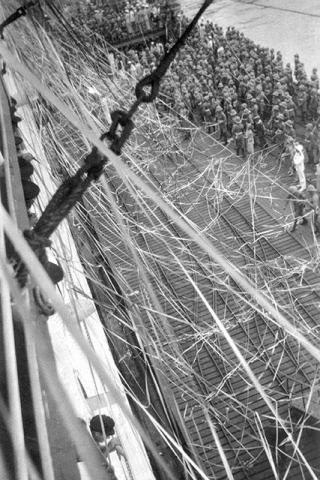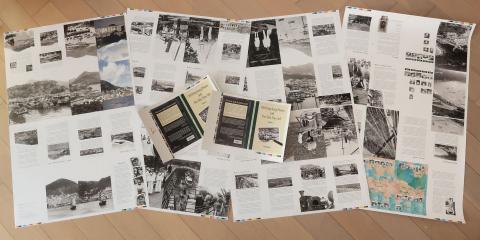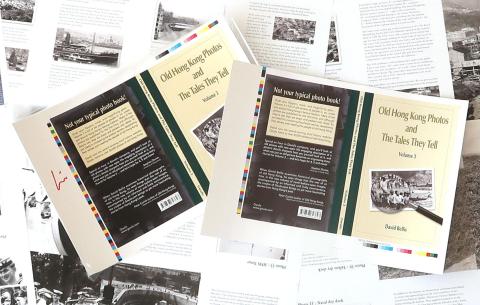The final extract from the new Gwulo book ...
For our last photo, we’ve come full circle and returned to passengers on a liner. We’re on the RMS Empress of Russia in 1928, preparing to leave Hong Kong. In the earlier photos we imagined the tourist’s view from a liner in the harbour, but here we’re clearly moored alongside a pier. Those narrow railway tracks show we’re at the Kowloon Wharves.
This ship belonged to Canadian Pacific. They advertised their service as the ‘shortest and quickest route across the Pacific’, taking 17 days to reach Vancouver. They encouraged passengers to continue on from Vancouver to the UK by catching the Canadian Pacific Railway (CPR) to Montreal, then crossing the Atlantic on another of their ships. Sailing east might seem an unlikely route today, as we’re used to flying west from Hong Kong to reach London. But it turns out the ship-rail-ship journey via Canada took about the same time as sailing west from Hong Kong to Britain, and was a popular choice for the journey.
This new route became possible after the cross-country CPR opened in 1886. The very next year, Canadian Pacific started regular sailings between Hong Kong and Vancouver. In peacetime they carried passengers, cargo, and mail (‘RMS’ stands for ‘Royal Mail Ship’). In wartime they’d carry troops. Britain wanted to be sure it could still get troops to its ‘Eastern Possessions’, even if an enemy blocked the usual route via the Suez Canal. It was one of the reasons that the British Government provided financial support to Canadian Pacific.
Returning to 1928, your thoughts are on less weighty matters. You’d been having a farewell drink with friends in the ship’s lounge, when the stewards called out ‘All visitors ashore!’ Your friends joined the throng heading down the gangway and onto the pier. They’re down there now, holding the end of a streamer you threw to them. The ship starts moving, the streamer pulls tight … and finally snaps. A last wave goodbye, and you’re on your way. Farewell Hong Kong!
The book finishes with a timeline and a map of the book's photos. If you'd like to see them, please download the PDF sample of Volume 3.
In the last newsletter, I was just about to see the running sheets for the first time. I'm happy to say that they look great, so I'm really pleased with how the new book has turned out. I laid the running sheets out on the floor just now, to show you what they look like:
The first impression is that there has been a terrible mistake, with pages apparently randomly scattered across each sheet. But after a sheet is folded and cut, it will magically transform into one section of the book, with all the pages in the right order.
The smaller items in the centre are two copies of the cover. The cover comes off the printer looking like the one on the right. Then it is laminated with a thin plastic sheet to make it more durable, which turns it into the cover on the left.
One side-effect of the laminate is that it makes the printed colours look a little bit darker and yellower. So it's not a bad idea to print an image on the cover a little bit brighter than usual, to make sure it looks good after it has been laminated. There has been lots to learn about making a book look its best.
I understand that the last step is to give each of the printer's binding elves a pair of scissors, a pot of glue, a needle and thread, and a stack of those running sheets. Once they've finished their work, there will be 1,000 copies of the new book, ready to be delivered to me on Monday. Then we'll get on with stuffing envelopes and carrying them over to the local post office, to send them on their way to you.
We currently have pre-orders for 213 copies, so I'm happy to see we've passed the 200-copy target I had in mind. It's also satisfying to see orders have come in from all around the world: Australia, Belgium, Canada, Denmark, Finland, France, Germany, Hong Kong, Japan, Luxembourg, New Zealand, Singapore, Sweden, United Kingdom, and the United States.
Further reading...
- View more sample chapters:
- Photo (1): Sulphur Channel
- Photo (2): Central and the Peak, c. 1906
- Photo (21): Kowloon City Pier
- Photo (22): Farewell!
- Or buy the book.


